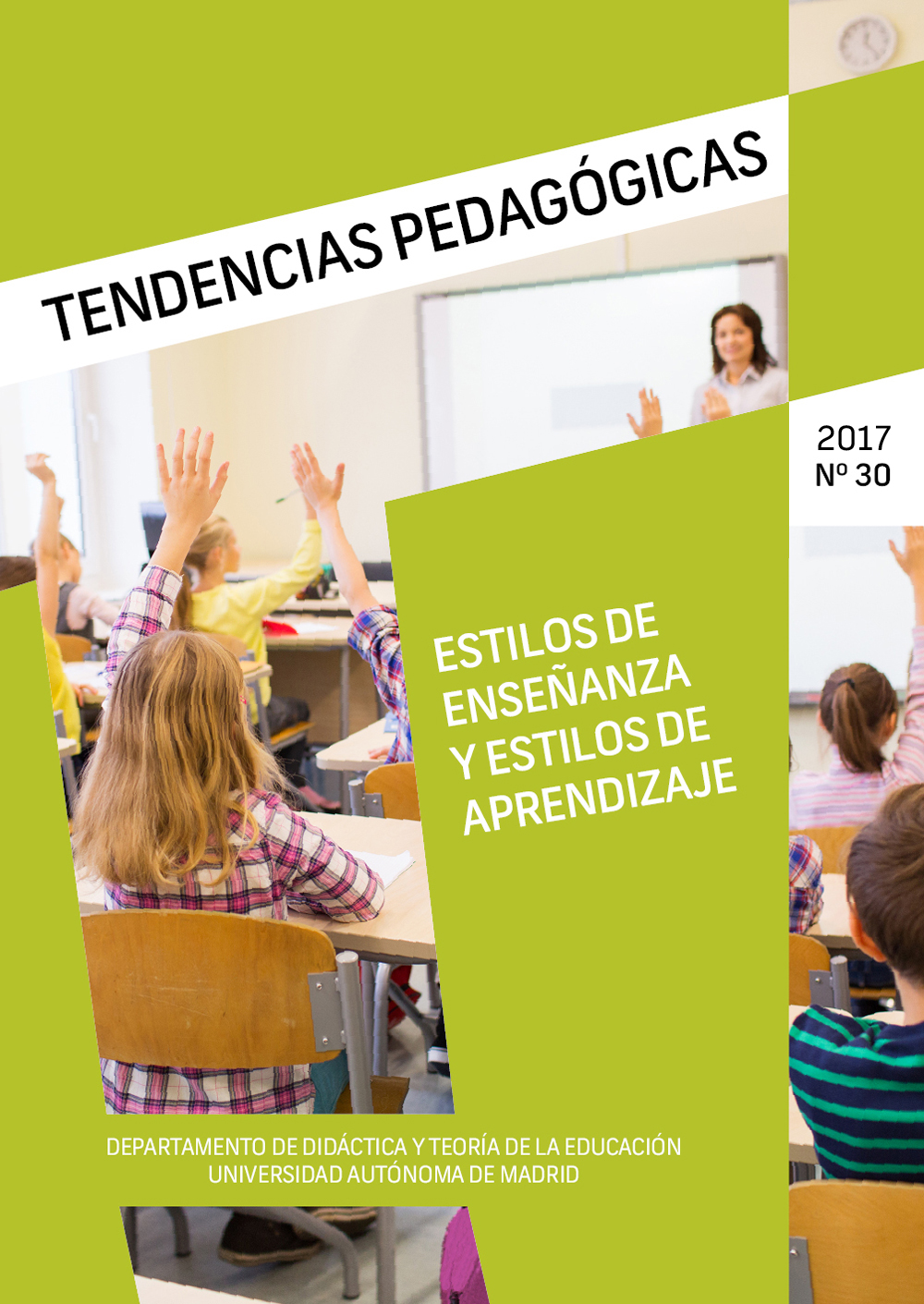Mobile learning and the learning of mathematics: the case of the MATI-TEC project in Peru
Keywords:
mobile learning, math skills, learning, motivation, self-efficacyAbstract
Actually, Mobile learning it’s a possibility to generate the challenges of education. Therefore, based on this research presents the results of the implementation and assessment of the Mati-Tec’ app to reinforce math skills to 311 students in fourth to sixth grade of four marginal urban public schools of Peru. The results showed an improvement in learning mathematics in students of 4th grade and high motivation and self-efficacy in students who used this software. In addition, teachers felt that the application helped them in their teaching strategies for mathematics serving as a source of motivation for students.Downloads
References
Adams Becker, S., Freeman, A., Hall, C., Cummins, M., & Yuhnke, B. (2016). Reporte Horizonte del NMC/CoSN: Edición 2016 K-12. Del Pre-Escolar al Grado 12. Austin, Texas: The New Media Consortium. https://www.nmc.org/publication/nmc-cosn-horizon-report-2016-k-12-edition
Carrillo, P. E., Onofa, M., & Ponce, J. (2011). Information technology and student achievement: Evidence from a randomized experiment in Ecuador.
https://doi.org/10.2139/ssrn.1818756
Cueto, S.; Andrade, F. & León, J. (2003). Las actitudes de los estudiantes peruanos hacia la lectura, la escritura, la matemática y las lenguas indígenas. Lima: GRADE.
Chirino, V., Noguez, J., Neri, L., Robledo-Rella, V., & Aguilar, G. (2010). Mobile Science. Students’ perception about the use of mobile devices in self-managed learning activities and learning gains related to mobile learning resources. In m-Science, Sensing, Computing and Dissemination. Eds. E. Canessa & M. Zennaro, pp. 225.
De-Marcos, L., Hilera, J. R., Barchino, R., Jiménez, L., Martínez, J. J., Gutiérrez, J. A., Gutiérrez, J. M. & Otón, S. (2010). An experiment for improving students performance in secondary and tertiary education by means of m-learning auto-assessment. Computers & Education, 55(3), 1069-1079.
https://doi.org/10.1016/j.compedu.2010.05.003
El-Hussein, M. O. M., & Cronje, J. C. (2010). Defining mobile learning in the higher education landscape. Educational Technology & Society, 13(3), 12-21.
Ericsson (2013). Ericsson Mobility Report. Retrieved from: http://www.ericsson.com/res/docs/2013/ericsson-mobility-report-june-2013.pdf
Evans, C. (2008). The effectiveness of m-learning in the form of podcast revision lectures in higher education. Computers & Education, 50(2), 491-498.
https://doi.org/10.1016/j.compedu.2007.09.016
Gavino, S., Fuertes, L., Lopresti, L., Defranco, G. y Lara, M. (2015). Aplicaciones para dispositivos móviles: una aproximación en las prácticas de enseñanza de los sistemas de representación. (591-598). III Jornadas de Investigación, Transferencia y Extensión ITE-2015, Facultad de Ingeniería Universidad Nacional de La Plata.
Göksu, İ., & Atici, B. (2013). Need for mobile learning: Technologies and opportunities. Procedia - Social and Behavioral Sciences, 103(0), 685-694.
https://doi.org/10.1016/j.sbspro.2013.10.388
Gros, B. y Suárez, C. (Coords.) (2017). Pedagogía red. Una educación para tiempos de internet. Barcelona, Octaedro.
Hagen, L. (2011). M-Ubuntu; A case study of mobile phone & literacy instruction in two South African Primary schools. IADIS International Conference on Mobile Learning. Avila, Spain, pp. 241.
Hashemi, M., Azizinezhad, M., Najafi, V., & Nesari, A. J. (2011). What is mobile learning? challenges and capabilities. Procedia - Social and Behavioral Sciences, 30(0), 2477-2481. doi: http://dx.doi.org/10.1016/j.sbspro.2011.10.483
Hernández, R.; Fernández, C. y Baptista, M. (2010). Metodología de la investigación. 5ta ed. Ciudad de México: Ed. McGraw Hill.
Hwang, G.J., Wu, P.H., Zhuang, Y.Y., & Huang, Y.M. (2013). Effects of the inquiry-based mobile learning model on the cognitive load and learning achievement of students. Interactive Learning Environments, Vol. 21, Issue 4, August 2013.
https://doi.org/10.1080/10494820.2011.575789
Ismail, I., Azizan, S. N., & Azman, N. (2013). Mobile phone as pedagogical tools: Are teachers ready? International Education Studies, 6(3), p36.
https://doi.org/10.5539/ies.v6n3p36
Kukulska-Hulme, A. (2010). Mobile Learning for Quality Education and Social Inclusion. UNESCO: Institute for Information Technologies in Education.
Ministerio de Educación del Perú (2009). Diseño Curricular Nacional de Educación Básica Regular. Lima: Minedu. Recuperado de http://ebr.minedu.gob.pe/pdfs/dcn2009final.pdf
Ministerio de Educación del Perú (2014). ¿Qué y cómo aprenden matemática nuestros niños y niñas? Lima: Minedu.
Morales, J. (2013). Aprendizaje móvil significativo: una aproximación a través de videocápsulas, Tesis de Maestría en Ciencias de la comunicación. México: Tecnológico de Monterrey, Campus Ciudad de México.
National Council of Teachers of Mathematics. (2003). The Use of Technology in the Learning and Teaching of Mathematics. Retrieved from: http://www.nctm.org/about/content.aspx?id=6360&itemid=6360&linkidentifie=id
Park, Y. (2011). A pedagogical framework for mobile learning: Categorizing educational applications of mobile technologies into four types. The International Review of Research in Open and Distance Learning, 12(2), 78-102.
https://doi.org/10.19173/irrodl.v12i2.791
Rinaldi, M. (2012). Revolución Mobile Learning. America Learning & Media. http://www.americalearningmedia.com/edicion-006/79-indicadores/325-revolucion-mobile-learning
Song, H.D., & Kang, T. (2012). Evaluating the Impacts of ICT Use: A Multi-Level Analysis with Hierarchical Linear Modeling. Turkish Online Journal of Educational Technology-TOJET, 11(4), 132–140.
Suki, N. M., & Suki, N. M. (2009). Are lecturers’ ready for usage of mobile technology for teaching. World Academy of Science, Engineering and Technology, 54.
Toteja, R., & Kumar, S. (2012). Usefulness of M-devices in education: A survey. Procedia - Social and Behavioral Sciences, 67(0), 538-544. https://doi.org/10.1016/j.sbspro.2012.11.358
UNESCO (2008). Estándares de Competencia en TIC para Docentes. Recuperado de goo.gl/OaJ3Cg
UNESCO (2013). Policy guidelines for mobile learning. Retrieved from http://unesdoc.unesco.org/images/0021/002196/219641e.pdf
Vasilachis, I. (2006). La investigación cualitativa. En: Estrategias de investigación cualitativa. Barcelona: Gedisa.
Wu, W., Jim Wu, Y., Chen, C., Kao, H., Lin, C., & Huang, S. (2012). Review of trends from mobile learning studies: A meta-analysis. Computers & Education, 59(2), 817-827. https://doi.org/10.1016/j.compedu.2012.03.016
